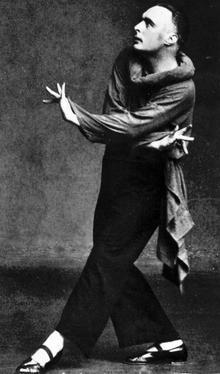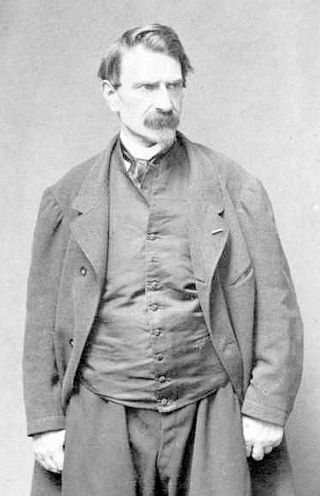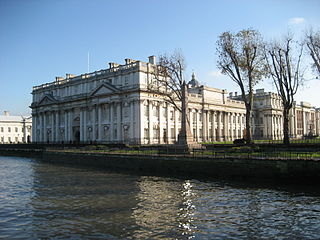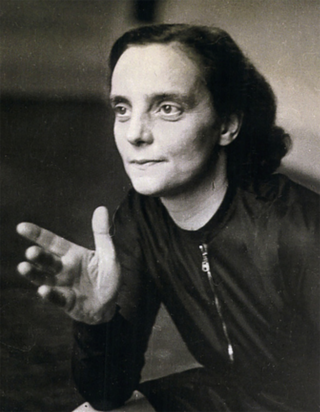Laban is a French surname. It may refer to:

Rudolf von Laban, also known as Rudolf Laban, was an Austro-Hungarian, German and British dance artist, choreographer and dance theorist. He is considered a "founding father of expressionist dance", and a pioneer of modern dance. His theoretical innovations included Laban movement analysis and Labanotation, which paved the way for further developments in dance notation and movement analysis. He initiated one of the main approaches to dance therapy. His work on theatrical movement has also been influential. He attempted to apply his ideas to several other fields, including architecture, education, industry, and management.

Labanotation is a system for analyzing and recording human movement, invented by Austro-Hungarian choreographer and dancer Rudolf von Laban, who developed his notation on movements in the 1920s.

Dance notation is the symbolic representation of human dance movement and form. Using methods such as graphic symbols and figures, path mapping, numerical systems, and letter and word notations. Several dance notation systems have been invented, many of which are designed to document specific types of dance while others have been developed with capturing the broader spectrum of human movement potential. A dance score is a recorded dance notation that describes a particular dance.
Laban movement analysis (LMA), sometimes Laban/Bartenieff movement analysis, is a method and language for describing, visualizing, interpreting and documenting human movement. It is based on the original work of Rudolf Laban, which was developed and extended by Lisa Ullmann, Irmgard Bartenieff, Warren Lamb and others. LMA draws from multiple fields including anatomy, kinesiology and psychology. It is used by dancers, actors, musicians and athletes; by health professionals such as physical and occupational therapists and psychotherapists; and in anthropology, business consulting and leadership development.

Expressive dance from German Ausdruckstanz, is a form of artistic dance in which the individual and artistic presentation of feelings is an essential part. It emerged as a counter-movement to classical ballet at the beginning of the 20th century in Europe. Traditional ballet was perceived as austere, mechanical and tightly held in fixed and conventional forms. Other designations are modern dance and free dance, expressionist dance or new artistic dance, in Anglo-American countries German dance. In 2014, modern dance with the stylistic forms and mediation forms of rhythmic and expressive dance movements was included in the German List of intangible Cultural Heritage as defined by the UNESCO Convention for the Safeguarding of Intangible Cultural Heritage. German Expressionist dance is related to Tanztheater.
The German Tanztheater grew out of German Expressionist dance in Weimar Germany and 1920s Vienna. The term first appears around 1927 to identify a particular style of dance emerging from within the new forms of 'expressionist dance' developing in Central Europe since 1917. Its main exponents include Mary Wigman, Kurt Jooss and Rudolf Laban. The term reappears in critical reviews in the 1980s to identify the work of primarily German choreographers who were students of Jooss and Wigman, along with the Austrian Johann Kresnik. The development of the form and its concepts was influenced by Bertolt Brecht and Max Reinhardt, and the cultural ferment of the Weimar Republic.

François Alexandre Nicolas Chéri Delsarte was a French singer, orator, and coach. Though he achieved some success as a composer, he is chiefly known as a teacher in singing and declamation (oratory).

Ann Hutchinson Guest was an American authority on dance notation and movement analysis, long based in the United Kingdom. She studied more than 80 dance notation systems and translated 20 to Labanotation. This gave her access to a number of dance works in their original version – such as Vaslav Nijinsky's L'Après-midi d'un Faune. Her extensive research, performing and teaching career led her to establish the Language of Dance approach to movement understanding.

Trinity Laban Conservatoire of Music and Dance is a music and dance conservatoire based in Greenwich, London, England. It was formed in 2005 as a merger of two older institutions – Trinity College of Music and Laban Dance Centre. The conservatoire has 1,250 undergraduate and postgraduate students based at three campuses in Greenwich (Trinity), Deptford and New Cross (Laban).

Lisa Ullmann was a German-British dance and movement teacher, predominantly remembered for her work in association with dance pioneer Rudolf Laban.
A movement director creates physical vocabularies through actor movement in a variety of production settings that include theatre, television, film, opera, fashion and animation.

Rudolf Laban created a movement theory and practice that reflected what he recognized as Space Harmony. The practice/theory is based on universal patterns of nature and of man as part of a universal design/order and was named by Laban: Space Harmony or Choreutics.
Laban Notation Symbols generally refers to the wide range of notation symbols developing from the original work of Rudolf Laban and used in many different types of Laban Movement Study such as Labanotation and Laban Movement Analysis for graphically representing human body positions and movements.
The Laban/Bartenieff Institute of Movement Studies (LIMS) in New York was founded in 1978 as a center for the development and study of the principles of Laban Movement Analysis, formulated by Rudolf Laban and further developed by his student and colleague Irmgard Bartenieff. The institute maintains a library and media resource center that includes published and unpublished text, films and photographs on the subject of Laban Movement Analysis.
Bonnie Bird was an American modern dancer and dance educator.

Sigurd Leeder was a German dancer, choreographer and dance education theorist. He was born in Hamburg on 14 August 1902, the son of Carl Eduard Gottfried Leder, lithographer, and Martha Auguste Anna Henriette Friedrich. He died in Herisau, Switzerland, on 20 June 1981. He developed a method of teaching expressive dance and contributed, with Albrecht Knust, to the development and dissemination of labanotation, which pioneered the written language of symbols to record and represent modern dance.

Peter Bridgmont was an English actor, acting professor and author who has had an extensive career on stage, film, and television spanning over 60 years. Bridgmont, who is a Guildhall School of Music and Drama graduate, was mostly known as one of the former members of the Theatre Workshop and one of the original cast members of the very first West End production of Agatha Christie's The Mousetrap opening in 1952 at the Ambassadors Theatre which went on to become the world's longest running stage production. On screen, he notably appeared in The Great War (1964) narrated by Michael Redgrave and the British television drama series Z-Cars (1962–1978) directed by Christopher Morahan. He founded the Chrysalis Theatre Acting School in London in 1975 and has long taught 'voice' and 'gesture' at the Shakespeare's Globe.

Katja Wulff, also Käthe Wulff,, was a German-Swiss expressionist dancer (Ausdruckstänzerin) and dance instructor. She attended Rudolf von Laban's dance classes and became associated with the Dada movement. She ran a dance school and was still teaching there at the age of 90.
Suzanne Perrottet was a Swiss dancer, musician, and movement teacher. Trained in music and dance, Perrottet ran the Bewegungsschule Suzanne Perrottet and was a member of the faculty at the École Polytechnique Fédérale de Lausanne and the Zürcher Bühnenstudio. She was active in the Dada art movement as a musician, performing at the Kaufleuten. In 1939 she co-founded the Swiss Professional Association of Dance and Movement. Along with Mary Wigman and Rudolf von Laban, she is considered one of the co-founders of modern Expressionist dance.










